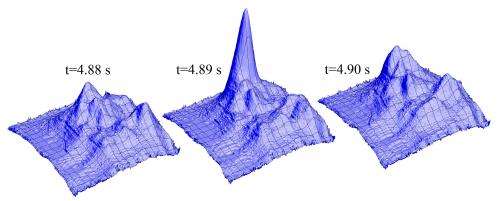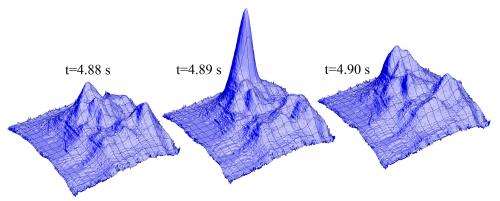Optical rogue waves: The storm in a test tube

Random processes in nature often underlie a so-called normal distribution that enables reliable estimation for the appearance of extreme statistical events. Meteorological systems are an exception to this rule, with extreme events appearing at a much higher rate than could be predicted from long-term observation at much lower magnitude. One such example is the appearance of unexpectedly strong storms, yet another are rare reports of waves of extreme height in the ocean, which are also known as rogue waves or monster waves.
About 5 years ago, rogue behavior was first reported for propagation of light pulses through an optical fiber, i.e., a completely different physical system. Given that observation of rogue waves requires comparatively little effort, this work has initiated a new research direction on optical rogue waves. In a publication in Physical Review Letters, Birkholz et al. now demonstrate the appearance of rogue waves in a new optical system.
Other than in previous publications, optical rogue waves in this system are clearly ruled by atmospheric turbulence in a gas cell, effectively enabling the observation of a storm in a test tube. This microscopic meteorological phenomenon is based on mergers between individual light strings (so-called filaments) in the gas cell. The merger events give rise to the observation of short light flashes, which can actually be observed by the naked eye. Careful statistical evaluation of the measured data indicates that these optical monster waves are much more extreme than their ocean equivalents.

While, in the ocean, a wave already qualifies as rogue if it exceeds the significant wave height by a factor two, we find optical waves that exceed this threshold by more of a factor ten - a truly rough optical sea.
More information: Simon Birkholz, Erik T. J. Nibbering, Carsten Brée, Stefan Skupin, Ayhan Demircan, Goëry Genty, and Günter Steinmeyer, "Spatiotemporal Rogue Events in Optical Multiple Filamentation", Physical Review Letters 111, 243903 (2013). DOI: 10.1103/PhysRevLett.111.243903
Journal information: Physical Review Letters
Provided by Max Born Institute




















